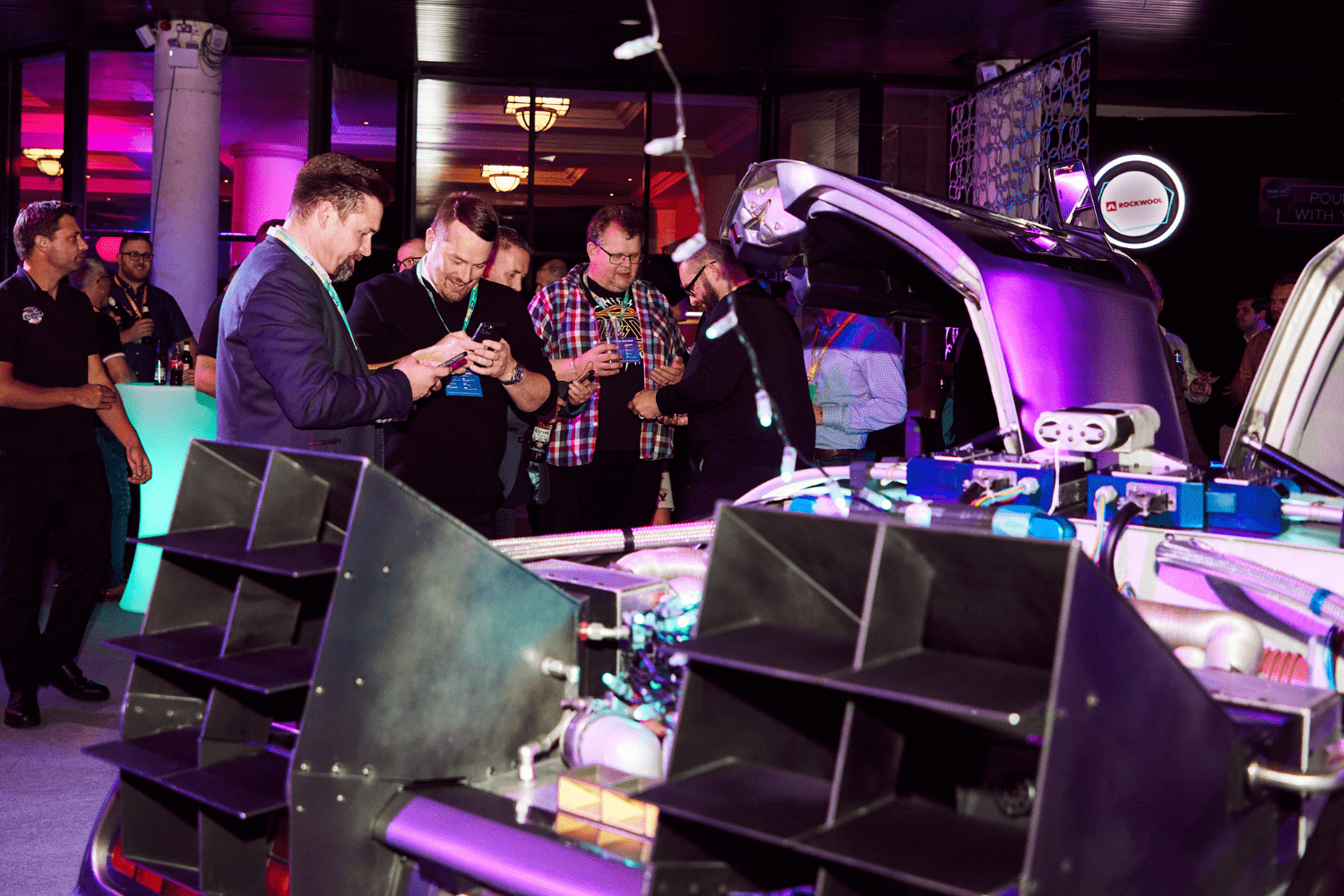 Back to News Room
Back to News Room
News

Paperless conferences: everything you need to know
With climate change and environmental issues so high on the mainstream public agenda, the importance of sustainability is something that can no longer be ignored by the events industry.
Sustainability matters to today’s successful businesses. An overwhelming majority (97%) of CEOs believe that sustainability is important to the future success of their business (UN Global Compact-Accenture CEO Study). But while most organisations will have some form of CSR or sustainability policy, this often excludes their event programmes. More than half (55%) of corporates surveyed for C&IT’s State of the Industry Report 2017 said they didn’t actively apply a CSR policy to their events.
Conferences create a lot of waste and leave a large carbon footprint, with the typical conference attendee producing 1.89kg of waste per day (Meetgreen) - so anything that can be done to reduce their environmental impact can make a huge difference. More sustainable events are no longer a ‘nice to have’, but the right and responsible thing to do. Given that a typical tradeshow can generate the equivalent of 170 trees worth of paper waste, and the average conference attendee can take home ten pounds of paper (Center for Sustainable Tourism), one of the simplest steps to making a more sustainable conference and reducing waste is by going paperless.
The benefits of switching to digital
Paperless conferences are essentially about replacing all printed event collateral – from paper invites to name badges, meeting agendas, handouts, brochures and feedback forms – with digital alternatives. By using tools and technology to eliminate or reduce paper use at events, you can greatly reduce your environmental footprint. However, the benefits are more than just environmental – it can also have financial benefits and improve the experience for both your team and audience. For example, it can reduce the costs and labour involved in printing and preparing event materials, plus the additional freight, storage and logistics involved. It will also save the stress and waste caused by reprinting thousands of paper programmes if there is a last-minute schedule change.
Meanwhile, your attendees are saved the bother (and back pain!) of having to carry around heavy booklets and huge bundles of paper, as digital technology enables them to have all the information they need at their fingertips. Millennials are also a key consideration for switching to digital, given they are used to doing everything digitally in their personal lives. As they represent an increasing share of the workforce – they will account for up to 75% by 2025 according to PWC – businesses are having to adapt to this generation’s demands. Millennials expect event content and communications to be more engaging and interactive, which is less achievable through printed materials.
A number of studies have also shown that compared to previous generations, millennials care more about working for an environmentally and socially responsible company than salary, with three-quarters (75%) willing to take a pay cut to work for a responsible company (Cone Communications Millennial Employee Engagement Study). Furthermore, almost two-thirds (64%) won’t take a job if a potential employer lacks strong CSR practices. So, taking steps to make your entire business more sustainable, including your events, not only helps protect the planet for future generations, but could also help you to attract and retain millennial talent.
For smaller internal meetings, going paperless should not be too difficult a task. However, for larger conferences and exhibitions (particularly those that involve third party sponsors and exhibitors), the prospect of removing printed materials entirely can be quite daunting. So, here’s some tips to help you along your way…
Complete a paper audit
The best place to start is by making a digital list of everything you would usually print for your event, from the very first meeting right through to the post-event debrief, and how much this would usually cost so you can work out how much you’ll be saving. If it’s an annual event – you should be able to look back at the previous year’s budget to get as accurate a figure as possible. If you can prove the financial benefits, it could help persuade any reluctant stakeholders to support the cause.
Get everyone onboard
The success of a paperless conference also relies on ensuring that everyone involved is on board with this way of working. This could be managed by appointing a ‘paperless champion’ or team to make sure people are sticking to the paperless plan.
Decide on your digital alternatives
To be truly paperless, all event planning should be done digitally, so choosing an online collaboration tool for sharing documents amongst the event team is a good place to start. Some digital enhancements to support a paperless event may include:
• Building a mobile-friendly event website containing all important information for attendees, along with the ability to register for the event.
• Creating a bespoke event app available for attendees to download to their portable digital device (smartphone, tablet etc.). Although this is a larger upfront investment, it can help to increase and measure audience engagement.
• Choosing ‘digital-friendly’ venues. There are a wide range of spaces available that readily provide digitally-enhanced facilities such as digital display units, video walls and options for project mapping/presentations.
• Introducing digital name badges or ‘smart tags’ that enable attendees and suppliers to easily exchange contact information and receive/download marketing collateral using QR codes, Bluetooth or RFID technology. This also diminishes the need for business cards, and allows delegate tracking (which can help improve future events).
• Marketing your event through digital platforms only e.g. email, mobile, social media, and other channels that best suit your target audience.
Communicate the benefits and provide on-site assistance
It is essential that attendees are informed that the event will be paperless from the offset and reminded of the benefits of switching to digital through ongoing communications. For example, let attendees know how many trees are being saved as a result – a tangible way the highlight the difference you are making.
Using an event app rather than physical collateral provides a way of measuring on-site interaction, and giving attendees access to conference content with the click of a button.
It could also be helpful to have additional support staff on-site to talk attendees through using the app if this is their first time or help explain any new technology you may have introduced such as QR Codes or RFID.
Incentivise people to support the initiative
Consider offering incentives or rewards for delegates, sponsors or exhibitors who support your paperless approach to encourage as much support as possible. These could be communicated via social channels such as Twitter, LinkedIn or Facebook to generate engagement and get people on board.
For example, you could offer a reduced fee for attendees who don’t print out any information and download the app. Sponsors could receive discounted fees or special recognition if they don't use handouts at their booths. You could also offer a ‘green exhibitor award’ at the end of your event, or charge exhibitors a fee for any paper waste produced.
Measure the outcome
Your paperless initiative will naturally improve over time. However, measuring the success of your first paperless venture is essential in order to do so. If you did not succeed in ridding paper entirely from your event, work out what the key obstacles were and come up with a plan for how to overcome them next time. Look at any financial and environmental benefits and make sure these are communicated to all stakeholders.
Of course, paperless conferences are just one step you can take to make a more sustainable conference. Once you’ve cracked that - you can look at other ways to reduce your event’s environmental footprint and protect our planet!









